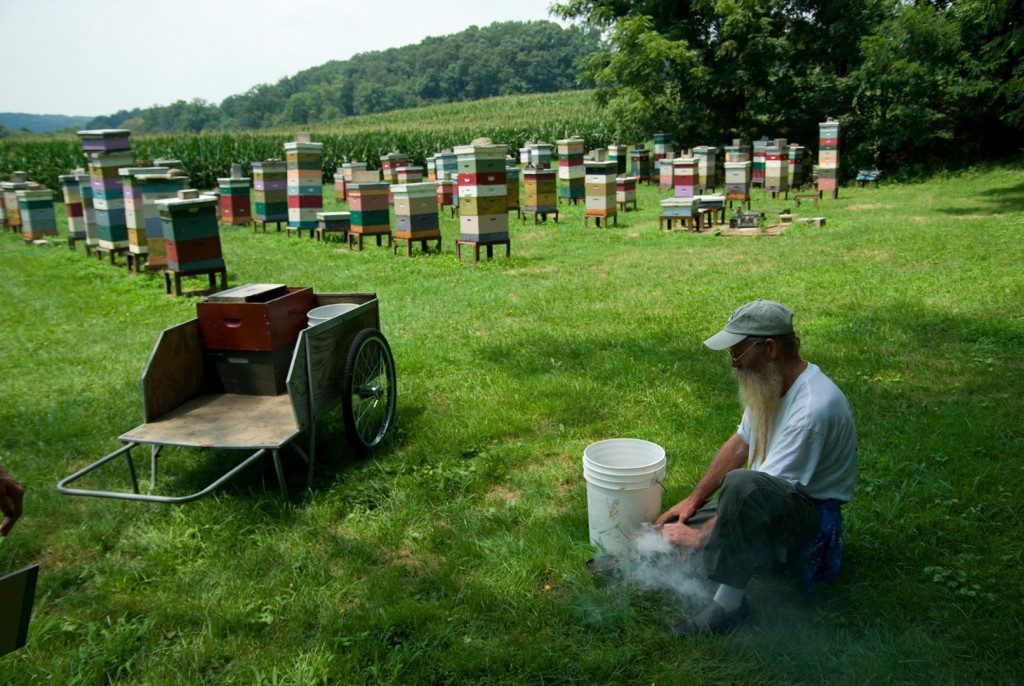
Walt Broughton has a pretty sweet life for having come upon it “quite by accident, really,” as he describes becoming a beekeeper. Swarmbustin’ Honey is located down a gravel drive in West Grove, Pennsylvania. The stone farmhouse and stock pond isn’t even the most picturesque scene in the place. Just past the pond, stacks upon stacks of brightly colored hives steal the show. A bee’s life is as peaceful as any person’s would be in such a setting.
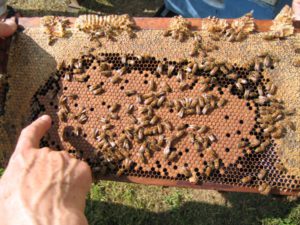 Walt began as a gardener on the property he now works and lives on as a full-time beekeeper. Working horses came next, but in 1983 he began the hobby that would become his life’s passion. By 1988 he had fifty beehives, one hundred a couple years later. At that point Walt began selling honey and in 1997 moved solely to beekeeping as a profession. He now employs five people full-time and ships honey as far away as the west coast. Fortunately for us, his honey and pollen is as local as it gets, which is great for adapting to allergies in this area.
Walt began as a gardener on the property he now works and lives on as a full-time beekeeper. Working horses came next, but in 1983 he began the hobby that would become his life’s passion. By 1988 he had fifty beehives, one hundred a couple years later. At that point Walt began selling honey and in 1997 moved solely to beekeeping as a profession. He now employs five people full-time and ships honey as far away as the west coast. Fortunately for us, his honey and pollen is as local as it gets, which is great for adapting to allergies in this area.
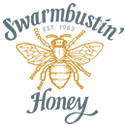 Did you know that bears don’t really love honey, it’s the larvae they want in a hive, and that wild bees are actually called feral bees because honeybees are not native to this continent. Honeybees, apis mellifera, originated in Africa, Asia, and Europe. A steady diet of royal jelly makes the queen fertile, who is the only female member of the hive who mates. All worker bees are infertile females, and drones, who have no stinger, are around only to fertilize eggs laid by the queen. The system is pretty perfect, actually. A queen bee will lay as many as 2000 eggs per day in individual cells. During the busy nectar gathering season, a bee’s life span is generally six to eight weeks. Young bees, or Brood are constantly being raised. Royal jelly is some incredible stuff: Walt says that “if you eat two or three queen cells [full of royal jelly], you better have something to do!”
Did you know that bears don’t really love honey, it’s the larvae they want in a hive, and that wild bees are actually called feral bees because honeybees are not native to this continent. Honeybees, apis mellifera, originated in Africa, Asia, and Europe. A steady diet of royal jelly makes the queen fertile, who is the only female member of the hive who mates. All worker bees are infertile females, and drones, who have no stinger, are around only to fertilize eggs laid by the queen. The system is pretty perfect, actually. A queen bee will lay as many as 2000 eggs per day in individual cells. During the busy nectar gathering season, a bee’s life span is generally six to eight weeks. Young bees, or Brood are constantly being raised. Royal jelly is some incredible stuff: Walt says that “if you eat two or three queen cells [full of royal jelly], you better have something to do!”
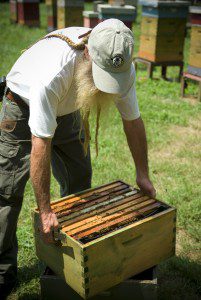 Bees are a model of community. Each member of a hive has a job that it performs for the good of all. While we learned about the hive, the bees were everywhere, and not at all frightening. Their sound was actually incredibly relaxing. Now I know why it’s called a “buzz.”
Bees are a model of community. Each member of a hive has a job that it performs for the good of all. While we learned about the hive, the bees were everywhere, and not at all frightening. Their sound was actually incredibly relaxing. Now I know why it’s called a “buzz.”
Walt is a respectful beekeeper. The hives are arranged top to bottom to allow more room for the bees’ own space than for honey production. He keeps a few hives at farms for fruit tree pollination, but for the most part the bees’ lives are centered around home, where they may be moved through different fields. “Swarmbustin’,” by the way, refers to the process of providing a new hive for bees who have outgrown their old hives and split into two groups, one of which will “swarm” to a new location.
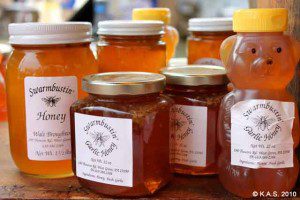 Recently there have been news reports and television specials about the decline of honeybee populations, called Colony Collapse Disorder, or CCD. Scientists wonder if bees will be able to keep up if earlier flowering times disturb the rhythm bees have been perpetuating for centuries. Walt’s take on the situation is that bees are adaptable, so long as humans stay out of the way. In his opinion, big agribusiness- chemical sprays, etc.- is really to blame for colony collapse. The poor practices of commercial beekeepers contribute as well. The more exposed bees are to chemicals, the greater compromise on their immune systems, which means they cannot fend off viruses. Seems like all creatures are subject to those conditions. As long as we support small honey farmers, bees will be supported and stick around to do their jobs.
Recently there have been news reports and television specials about the decline of honeybee populations, called Colony Collapse Disorder, or CCD. Scientists wonder if bees will be able to keep up if earlier flowering times disturb the rhythm bees have been perpetuating for centuries. Walt’s take on the situation is that bees are adaptable, so long as humans stay out of the way. In his opinion, big agribusiness- chemical sprays, etc.- is really to blame for colony collapse. The poor practices of commercial beekeepers contribute as well. The more exposed bees are to chemicals, the greater compromise on their immune systems, which means they cannot fend off viruses. Seems like all creatures are subject to those conditions. As long as we support small honey farmers, bees will be supported and stick around to do their jobs.
